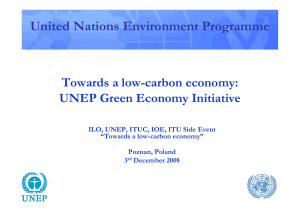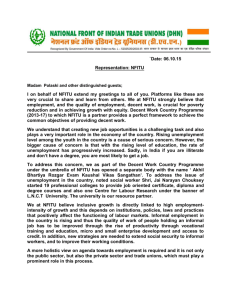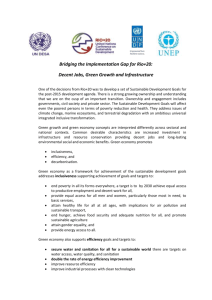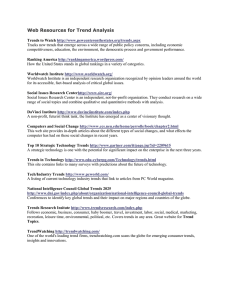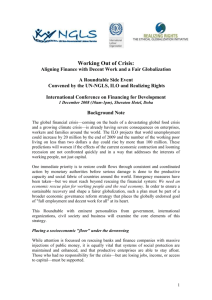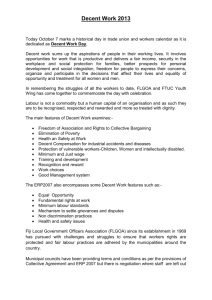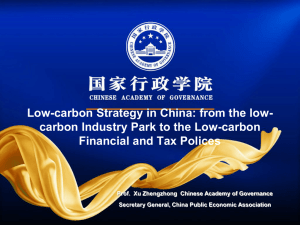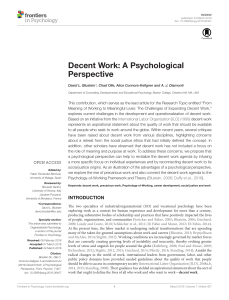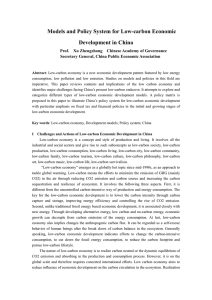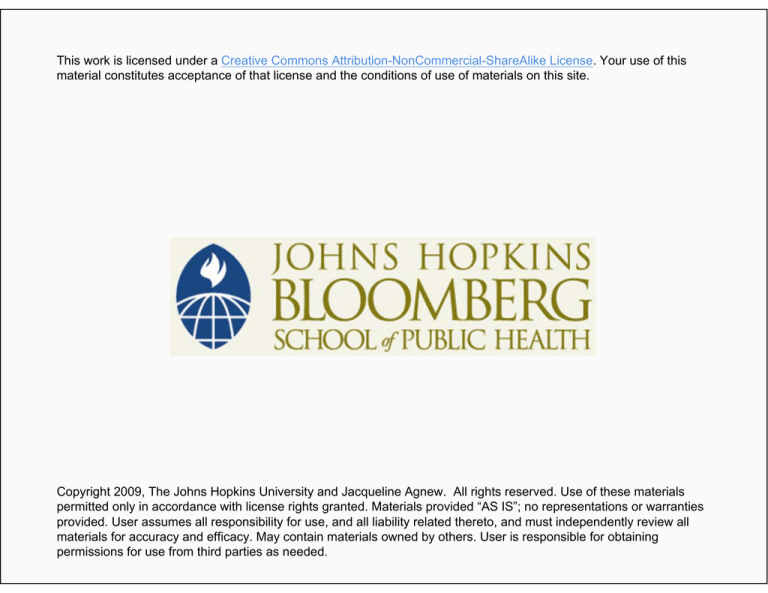
This work is licensed under a Creative Commons Attribution-NonCommercial-ShareAlike License. Your use of this
material constitutes acceptance of that license and the conditions of use of materials on this site.
Copyright 2009, The Johns Hopkins University and Jacqueline Agnew. All rights reserved. Use of these materials
permitted only in accordance with license rights granted. Materials provided “AS IS”; no representations or warranties
provided. User assumes all responsibility for use, and all liability related thereto, and must independently review all
materials for accuracy and efficacy. May contain materials owned by others. User is responsible for obtaining
permissions for use from third parties as needed.
Green Workers
Jacqueline Agnew, RN, MPH, PhD
Johns Hopkins University
Each Year …
The world digs up, crunches through various processes, throws away
a half-trillion tons of stuff
Good news: we can meet human needs, raise standard of living, still
be profitable
− Lower consumption
−
−
−
Raise resource efficiency
Circulate materials, not dump them
Mimic nature (biomimicry)
Sources: Lovins, H. State of the world 2008. Rethinking production; Worldwatch Institute Report. State of
the World 2008: Innovations for a sustainable economy, 1–2.
Six Waves of Innovation
Six periods of innovation—each based on new technologies that
underpin economic prosperity
Green Economy
Goal = low-carbon global economy
Efficient use of energy
Reducing polluting emissions
Use of renewable sources of power
Investment in new technologies, equipment, buildings, and
infrastructure
Investment in opportunities, jobs, and stronger communities
Green Jobs
Contribute substantially to preserving or restoring environmental
quality
Help to protect ecosystems and biodiversity
Reduce energy, materials, and water consumption through highefficiency strategies; de-carbonize the economy; and minimize or
altogether avoid generation of all forms of waste and pollution
May be in agricultural, manufacturing, research and development
(R&D), administrative, service, and other areas
Classification of Green Industries
Source: Chancellor’s Office, California Community Colleges Centers of Excellence, Economic and Workforce Development
Program. (2009). Green industries and jobs in California. pp. 1-22. Additional classifications are available on page 3 of the
report: http://www.coeccc.net/green/documents/Emerging_Green_09.pdf
Possible Changes in Job Distribution
Job creation, e.g., pollution control devices
Job substitution, e.g., switch from truck manufacturing to rail
manufacturing
Existing jobs transformed and redesigned, e.g., plumbers,
electricians, construction workers
Job elimination without replacement, e.g., product banned and
production discontinued
Concerns
Many are small businesses
Not aware of hazards
Can’t afford controls
Rapidly changing technologies, techniques
New hazards
No health and safety oversight
Example – Production of Biofuel
Transportation
Chemicals
Pressurized equipment
Injury risks
UNEP, ILO, IOE, ITUC. Worldwatch Institute. 2008. Green Jobs: Towards decent work in a
sustainable, low-carbon world. 1-376. Used with permission.
Green Jobs in Developing Countries
Training in solar technicians, repair, maintenance in Bangladesh –
100,000 jobs
What is decent work?
Jobs that are respectful of environment and workers’ health,
human needs and rights
−
adequate wages
X Safe conditions
X
X
Job security
Reasonable career prospects
What work is Not Decent?
Poor practices, exposing workers to hazardous
substances, e.g., electronics recycling in Asia
Problems such as forced labor & child labor
Examples –
−
−
workers on sugar cane and palm oil plantations
Brazil, Malaysia, Columbia, Indonesia
China – more jobs, poor pay
Shades of Green
UNEP, ILO, IOE, ITUC. Worldwatch Institute. 2008. Green Jobs: Towards decent work in a
sustainable, low-carbon world. 1-376. Used with permission.
What can be done?
Quality job training
− Help transition from “old” industries
−
Support wages while training
Link company incentives with job quality and training standards
Devise sustainable production systems and work practices – with
workers’ input
Agreements across nations


